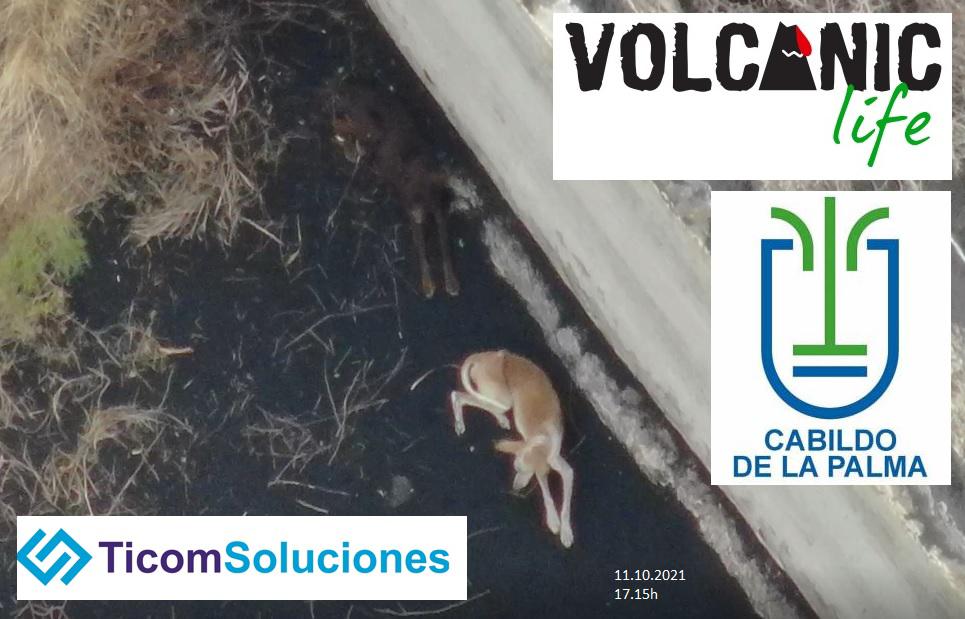
Efforts to rescue dogs trapped by surrounding lava flows from an erupting volcano on the Spanish island La Palma are reportedly advancing. Practice flights of drones intended to airlift the hounds up, over, and out of their molten prison have passed tests with flying colors.
As DroneDJ previously reported, as many as six dogs have been spotted by UAV flights over a neighborhood on La Palma that has been cut off from the outside world by volcano lava flows and dense ash being spewed into the air. The lava keeps people and vehicles from reaching the stranded dogs by land and poses too great a risk of blocking engines for helicopters to fly in. As a result, a regular rotation of small drones has been transporting airdrops of food and water into the area to help keep the emaciated canine prisoners alive.
This week, a new actor entered the picture: Galician drone services company Aerocámaras, which requested and got official approval for a plan to airlift the stricken dogs out of their volcanic lava prison. According to Spanish daily El País, test flights towards making that happen have produced inspiring results.
Aerocámaras CEO Jaime Pereira says the plan is to use a heavy-lift drone with a tailor-made, net-shooting payload system to ensnare the dogs, using food as bait. Once the animals have been secured, the drone will carry them about 450 meters over the surrounding lava flows to safety and care.
The trick, however, is the UAV’s batteries won’t be able to haul that precious cargo out of the lava trap if the craft also has to hover a long time during repeated attempts to net the wary creatures.
But the first dry run, Pereira told the paper, has shown the strategy to be “viable.” The specially equipped drone flew a total of 1.2 km carrying a 15.5-kilogram payload and finished with 35% of its battery still charged. Meanwhile, the bespoke netting system deftly enclosed itself around a simulated dog target, providing snug support yet still allowing free movement of the head and limbs.
As far as Pereira is concerned, it’s good to go – were it not for a recent spike in heat. Indeed, the once visible, languishing dogs have taken to hiding in order to escape rising temperatures, making the immediate launch of the airlift futile. But once that heat drops and the operation can commence, it will rapidly unfold in two stages.
First, the usual food and water flights will start using zoom and thermal cameras to inspect the delivery areas for heat signatures of the dogs in their hidey holes. This will help to determine the ideal bait-drop locations. These longer, lingering missions are also intended to allow the critters to become acclimated to the flying craft.
Then, as soon as it appears possible, the missions will shift objectives, and use food to lure the dogs out of hiding in order to net and airlift them out – one at a painstaking time. Pereira says that the sequential process isn’t a problem – and that he intends to complete it, getting all the stranded dogs out alive.
“We will be there all day,” Pereira told El País. “If they let us fly at night, we will be there at night because the thermal cameras give us much more information, because right now the temperature is very high.”
FTC: We use income earning auto affiliate links. More.




Comments